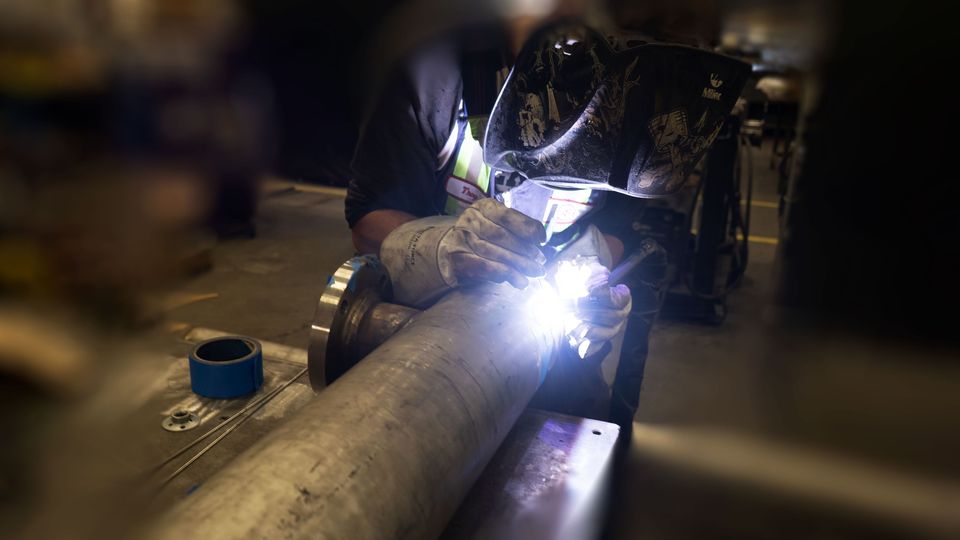Welding is one of the most used processes to make a union of metals (especially pipes). This procedure makes it possible to get permanent joints with a resistance equal to or more robust than the base metals.
From the beginning of metal welding to our times, new welding techniques have emerged, whose principle remains the same, to carry out joining two metals through the same alloy or using a third metal as welding material. One advantage of welding is that thanks to new technologies, the parameters of this process can be controlled, automated, and optimized, either mechanically or electronically. Next, we will know the types of welding for pipes most used today:
Metal arc welding (MMAW or SMAW)
Metal arc welding is a type of welding in which electrodes are used. It has two methods: “manual metal arc welding” or MMAW for its acronym in English (Metal Manual Arc Welding) and “shielded metal arc welding” or SMAW (Shielded Metal Arc Welding), where steel electrodes are used; which are coated with a particular material, in which no protective gas is used, since the electrode, when subjected to the heat of welding, produces carbon dioxide, which acts as a “shield” preventing the penetration of the oxygen from the atmosphere, which prevents oxidation and the formation of debris on the weld “bead.”
As the core of the electrode melts, the pieces are joined, and the spaces are filled; this type of welding is the most popular and is a recommended technique for those who are just starting in pipe welding.
Gas Metal Arc Welding (GMAW)
Gas metal arc welding, or GMAW for its acronym in English (Gas Metal Arc Welding), is divided into two types according to the gas used to protect the welding “bead”: MIG welding (Metal Inert Gas), mainly which does use inert gas and is used primarily for welding aluminum or stainless steel and MAG (Metal Active Gas) welding which is used for welding conventional steel. GMAW welding uses a more uncomplicated, mainly used technique, but requires more sophisticated equipment.
TIG o GTAW welding
Inert gas welding of tungsten TIG (Tungsten Inert Gas) or Arc welding with tungsten gas GTAW (Gas Tungsten Arc Welding) is another type of welding for pipes that uses a permanent tungsten electrode that is not consumable and that protects the welding “bead” with gas (like GMAW welding), but achieving higher temperatures. A slow and precise welding process, which requires a more advanced technique, characterizes it.
One of the best-known methods of tungsten inert gas welding or TIG is orbital welding, which offers a high-quality standard in its final products since being a “programmable and automated” process allows repeatedly working in the same procedure allows getting the same results in all operations. Another advantage of this type of welding is the flexibility in the welding positions, reduced operating costs, and less contamination.
Gas welding
This type of welding is one of the best-known and low-cost procedures; however, its use at an industrial level has decreased considerably and is used mainly at the domestic level. Gas welding stands out for its practicality when operating or mobilizing different work teams; however, it has the disadvantage of a long time for the materials joined by said welding to cool down.
What do you think about this topic? Do you know other types of pipe welding?
If you have questions or queries, contact us or write your query below (comments section).

1 Response to "Types of pipe welding"
It’s interesting to learn more about welding techniques such as gas welding which is commonly known to be a cost-effective process. I also wonder what kind of equipment these procedures use. I would understand how each has different machines and different types of accessories as well.